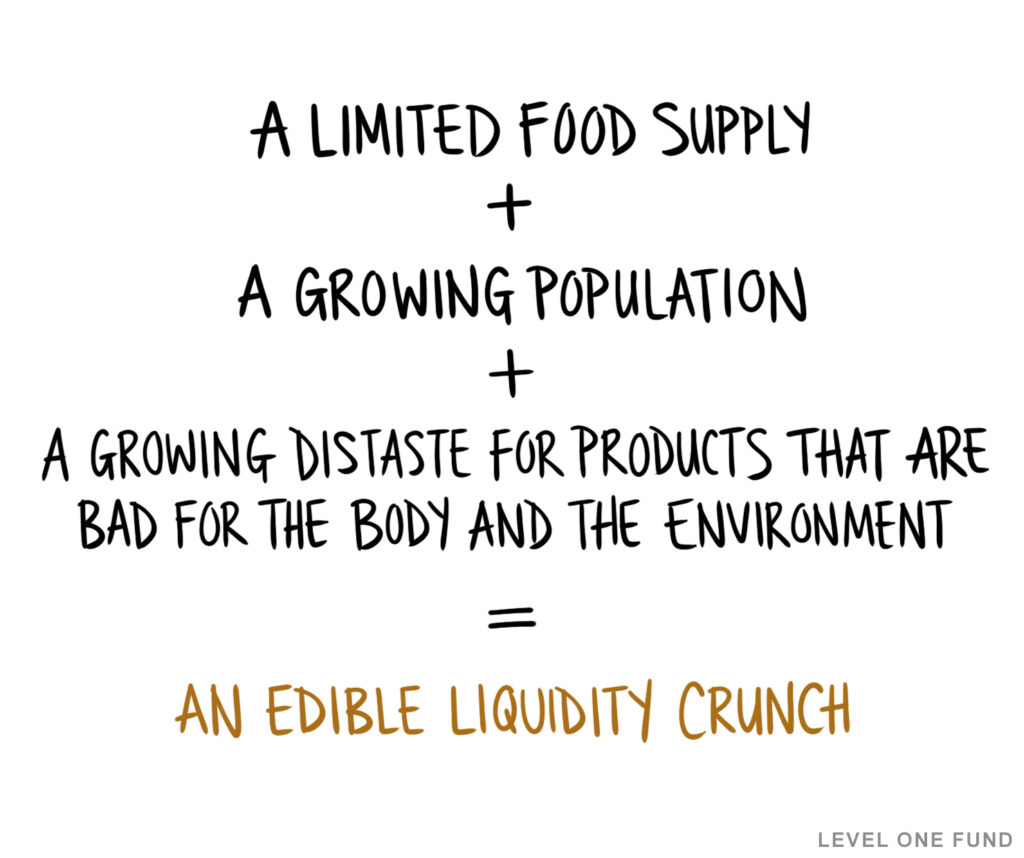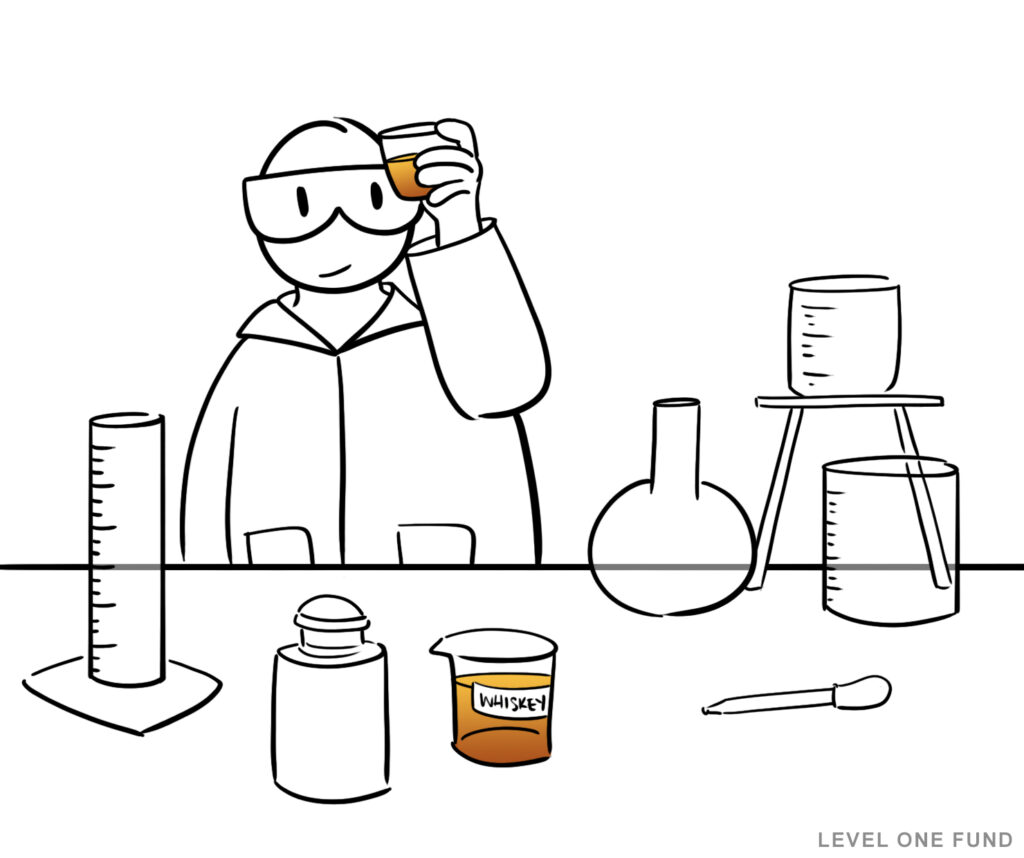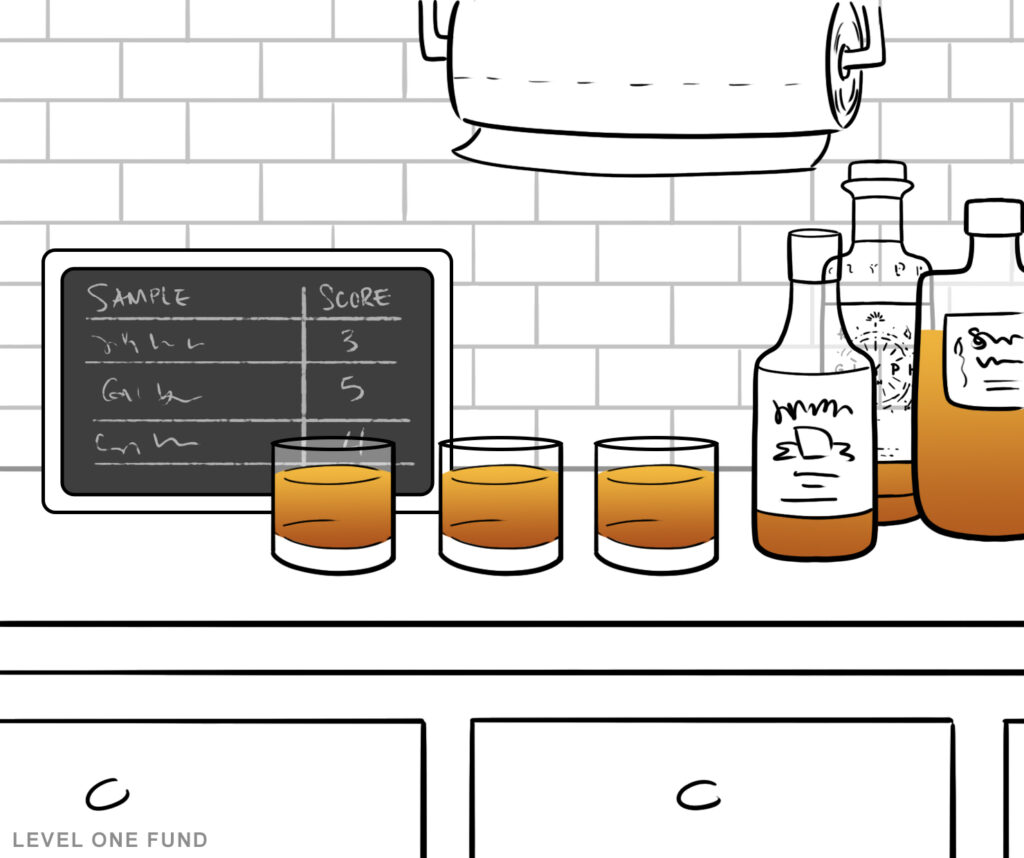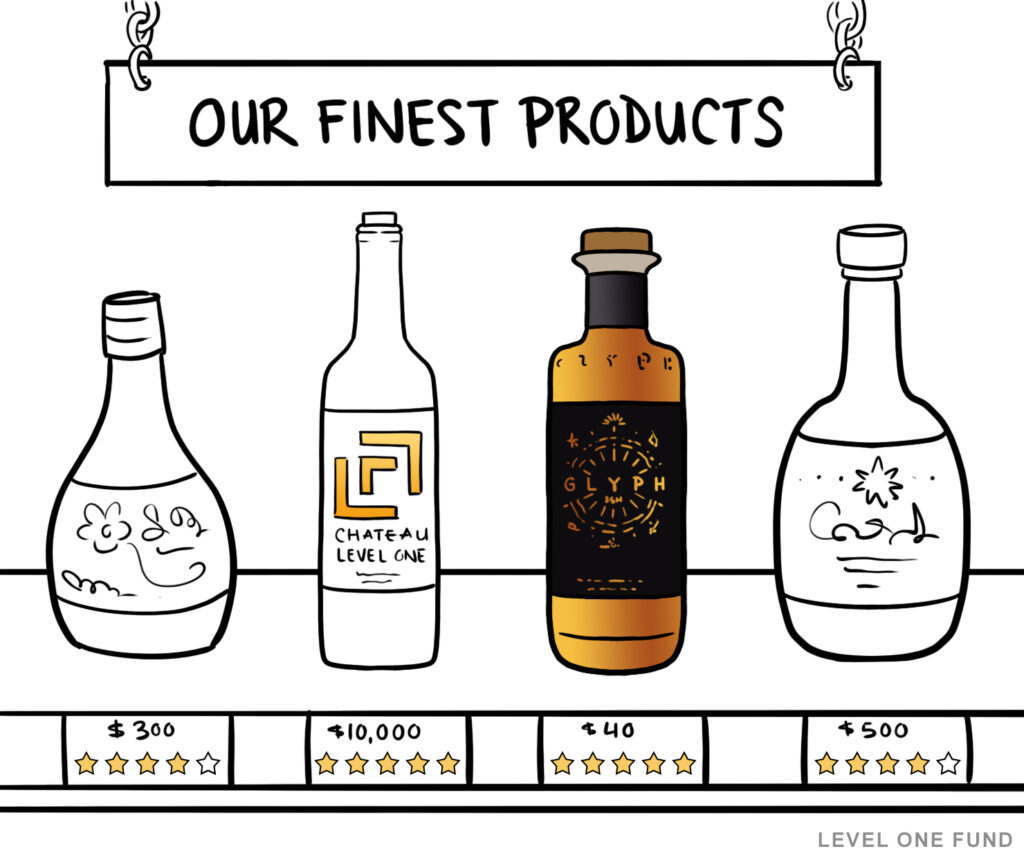There’s plenty to be excited about in today’s food tech world, and the reasons for this are almost as numerous as the companies working to solve its problems. If you missed the memo on food tech, just keep in mind this simple equation:

Fixing the system
These are the major problems facing the food world, and each year they become more acute as the globe’s demands outstrip what our industries are able to produce. That’s why companies like JUST, Beyond Meat, and Apeel Sciences play such a key role in the future of humankind: without their innovative products and solutions we will inevitably reach a point where the system can no longe provide what we need.
Part of the reason I’m so excited to announce our investment in Endless West is because it’s not only part of the solution to aspects of the problem described above, but it’s venturing into truly uncharted territory in the fiercely competitive food tech space with molecular reproductions of food and beverage products.
This process begins with taking a consumable product and analyzing its molecular composition in a laboratory. This produces a blueprint of what gives the product its taste, smell, and composition. The molecules in this blueprint can be easily and inexpensively sourced and extracted from a range of natural sources, and then combined in a production facility to produce the product at scale. While there are certainly many nuances and complex scientific details behind it, this generally describes the process through which a company like Endless West can produce molecular reproductions of products.

When I first learned about Endless West I was fascinated that it had purportedly produced high quality spirits without aging or barreling, and I knew I had to try them for myself. I soon thereafter headed over to a nearby liquor store to purchase their whiskey product, Glyph.
A molecular whiskey walks into a bar…
Later that night I convened with several friends for an experiment. These friends appreciate fine whiskey and have experienced palettes for it (I admittedly don’t) and they brought two fine bottles that we would taste alongside Glyph. One was priced around $800, and the other around $200. Compared to Glyph, which typically sells for around $40 a bottle, the competition was steep. After everyone tasted the three options, we arrived at an impressive result: varying across several opinions, Glyph was as good if not better than the whiskeys it was up against. In fact, one of these people who is especially knowledgeable about fine liquors (and even collects whiskey and wine) placed Glyph on par with the ~$800 bottle.
I became hooked on the concept of recreating spirits that are both inexpensive and competitive in taste against their most well-respected counterparts. How could a product like Glyph outclass, or at least tie, a well respected bottle that costs over 20x more?

Deciding to investigate whether this result held up with its other products, I acquired another molecular spirit created by Endless West: a sake called Kazoku.
This time I turned up the heat by pitting Kazoku against 4 other sakes, with a total of 6 people trying to distinguish which of the 5 choices was created in a lab. To acquire these other sakes, I didn’t merely order at random online, but I went to one of the country’s few sake specialty stores, and consulted with the shop’s owner to procure a selection of sakes ranging from low to high end. Kazoku was up against some serious contenders, including 1 or 2 sakes at the highest end of the quality spectrum.
As the blind taste test commenced each person went through the sakes. Once every vote was tallied, I revealed a fascinating result: not one person voted that the glass containing Kazoku was the one made in a lab.
While many conclusions can be drawn from these tasting experiments, in my mind one stands above all: it is indeed possible to create spirits in a laboratory that are indistinguishable in quality and taste from their traditionally produced counterparts – even those of high quality.
Impact potential
Having established this critical piece of the story I was thirsty (pun intended) to learn more. I began thinking beyond the world of alcohol, and imagined what the potential ramifications could be on the global food system if molecular reproductions of other product categories were also created. While the story of molecular reproductions is very much in its nascency, it has already moved beyond a proof of concept phase. The fact that it is possible to create a $40 bottle of whiskey that is indistinguishable from an 18 year old counterpart that costs 20x more makes it hard to understate the significance of this methodology.
While producing an inexpensive product that tastes as good as an expensive counterpart is nice, creating it with net positive effects upon the environment while helping to meet the growing demands of our global food system is even nicer. The production process for Glyph and Kazoku demonstrates that this can be done, as they each require a much smaller quantity of water, time, and resources to produce, and the entire production cycle yields much lower levels of carbon emissions. On top of this, the requisite molecules to create these products can be extracted in large part from existing food waste. Combine these factors and the potential of their compounding positive effects upon the globe becomes clear.
Adoption
Are people willing to consume lab-made products over their traditionally produced counterparts? Given time I believe that molecular products geared towards the mass market will see wide adoption. While I don’t see these products making signifiant headway in high end, luxury segments, that’s ok because it’s not their intended purpose. Many wine enthusiasts will continue to drink Chateau Lafite because of the craftsmanship and story behind it, not to mention the symbolic impact of opening a bottle that can cost many thousands of dollars. These types of consumers, connoisseurs, and special occasions are not what molecular reproductions are going after.

An analogy that CEO Alec Lee often invokes is the adoption of digital music. Over the years music consumption transitioned from vinyl to cassettes, CDs, and ultimately to digital files. While digital music was at first met with resistance from incumbent businesses, they eventually embraced it as an inevitable evolution of their industry. Although digital music is the de facto standard in the music world today, there are still many people who enjoy listening to music on vinyl. This passion for vinyl stems from the quality of the music and the tradition behind it, and the fact that a more convenient form of music exists digitally does not diminish these factors.
With so much at stake in the years to come, I believe that Endless West will play a pivotal role in the future of our food system. It’s no stretch of the imagination to anticipate that one day we’ll be producing food and beverage products from start to finish under one roof, in quantities large enough and with a speed fast enough to satisfy an ever-increasing global demand.
Originally published in 2020